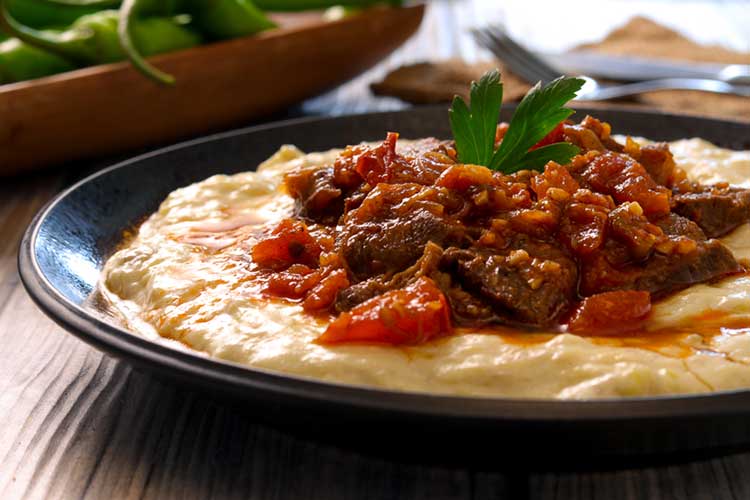Although we think that almost every dish we feature on Arousing Appetites is fit for a king, Hunkar Begendi was quite literally a royal favorite. Braised chunks of lamb swimming in a smoky eggplant puree is a Turkish dish that dates back to the days of the Ottoman sultans and their vast kitchens in the palaces of Istanbul.
Hunkar Begendi, whose name literally means ‘The Sultan liked it’, was one of the few things loved by the infamously malevolent Murad IV, or so the story goes. With such unlikely royal endorsement, it’s no wonder that the dish has managed to survive 400 years of political undulation, including the fall of the Ottoman Empire and the creation of a republic in Turkey.

OPULENCE IN THE OTTOMAN PALACE KITCHENS
Given a culinary time machine, this author would set the dial to 16th century Istanbul and the kitchens of Topkapı Palace whose ten pairs of chimneys are still proudly erect and form an instantly recognizable feature of the city’s silhouette. At their peak, these kitchens used to put out food on an industrial scale, feeding up to 10,000 people in a single meal.
The palace shopping lists were epic: in 1723 it was recorded that the kitchens got through 30,000 heads of beef, 60,000 of mutton, 2000,000 of fowl, to name just a few meat courses. In 1581, hungry palace mouths would rip through enough grain to fill eight cargo ships from Egypt.
Manned by literally hundreds of kitchen workers under the jurisdiction of 60 specialty chefs, the primary goal of each day’s cuisine was to please the man at the top, the secondary to do well by his mother, wives and concubines in the Harem, and then to all the officials, janissaries, soldiers and workers, the quality of whose meals diminished in accordance with their rank.
THE IMPERIAL FOOD CHAIN
The Sultan’s food was prepared in a special part of the kitchens called the Küşhane (the Aviary), and was sealed with wax until it was presented to the monarch in order to keep the contents pure. The palace always had a person in the role of the Çeşincibaşı, the Imperial Taster, whose job it was to try the food before it touched the sultan’s lips; ostensibly there to verify the quality of the dishes, the Çeşincibaşı also buffered the Sultan from any food-borne assassination attempts.
Mealtimes were a social affair in Ottoman times, with groups of diners sitting on the floor around a low table called a sofra and eating with their hands, or, when necessary, with spoons. The Sultan was the exception to this tradition, as he would eat alone, picking mouthfuls from the multiple courses that were served to him at his own exclusive sofra.
MURAD IV, A SANGUINE SULTAN
As we mentioned earlier, the fact that Sultan Murad IV supposedly liked Hunkar Begendi is nothing short of miraculous, given that there were many things the Sultan did not like at all. Known for his thunderous nature, the Sultan ruthlessly quashed various uprisings, both on domestic and far-flung military fronts and was the first Ottoman potentate to execute a Shaykh Al-Islām, who would have been the most prolific Muslim dignitary in the Empire.
Not a strict keeper of the rules of Shari’a law himself, he still banned the use of tobacco and shut down coffee shops and wine shops in Istanbul, in order to try and stamp out potentially seditious gatherings. A favorite pastime of his was to wander the city in disguise, rooting out troublemakers at street level and delivering the appropriate punishments himself. Did we mention he also killed his brother?
You get the idea why the people surrounding him might have wanted to please him, the first among them being the cooks in the kitchen. The story goes that Murad first tasted Hunkar Begendi, a lamb stew and aubergine puree dish, at the house of some country folk he stayed the night with on his way back from a hunting trip. One can imagine rumor of the Sultan’s delight whispering through the palace kitchens where Hunkar Begendi would have emerged and immediately taken prided place next to other favorite and imaginatively-named dishes like Women’s Thighs, Young Girl’s Breasts and Lady’s Navel.
HUNKAR BEGENDI’S OTHER STORY
There is another story about the emergence of Hunkar Begendi, which dates the dish to a later period during the Ottoman Empire, but we like it less. This tale places the dish on the plate of Princess Eugenie, Emperor Napoleon III’s wife, who was visiting Sultan Abdülaziz in the monarchy’s summer digs at Beylerbeyi Palace in 1869. She loved the stew so much that she asked to be given the recipe from the Sultan’s cook, who, shockingly, refused. While we appreciate the nineteenth-century romance of this creation myth, we are reluctant to let go of the image of the enraged, fratricidal warrior-cum-master of disguise sitting alone at his sofra and peeling the wax seal off of his pre-tasted, enduring favorite, Hunkar Begendi.
ABOUT THE RECIPE
The key to getting Hunkar Begendi just right, and so not incurring the wrath of the Sultan, is in the smokiness of the eggplant and the tenderness of the lamb in the stew. For the eggplant, the best way to cook it if you don’t have a charcoal grill to hand is to hold it above a gas flame on your cooker and turn it until the skin is uniformly charred and you can feel the flesh inside the skin has softened. This method will give the eggplant the delicious smoky flavor that really grounds the dish.
If you don’t have a gas stove at home, do not fret – another alternative is to place the whole eggplant under the broiler (leave 2-3 inches space between the broiler and the skin of the eggplant) and allow it to char slowly, turning it every so often to keep the blackening uniform. We find that three turns, each every 20 minutes, does the trick. While it’s a good idea to keep an eye on what’s going on under your broiler, don’t be too alarmed by the smell of burning eggplant skin emanating from your oven.
The cut of lamb you choose will also affect the way the stew comes out. We find that tougher cuts tend to work better for stews, pieces like the leg or the shoulder instead of rib or loin. They’re cheaper too, so that’s even more incentive!
PREPARING THE LAMB STEW
First, set out all of your ingredients. Season your lamb cubes with salt and pepper and heat the oil in the pan.
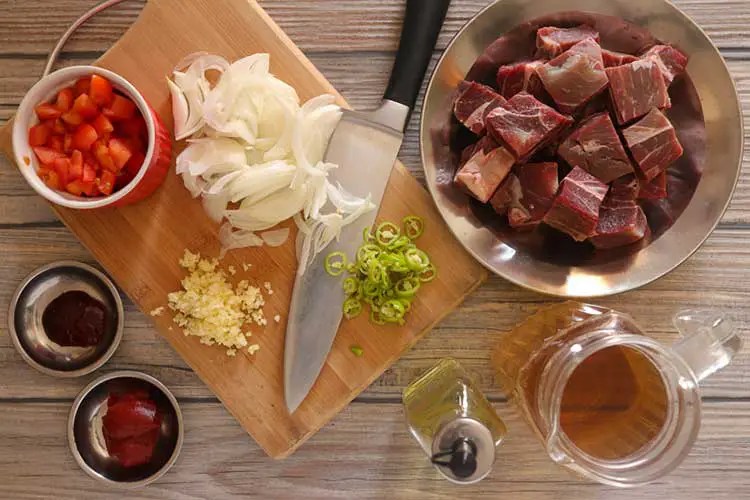
Sear the lamb cubes on the heat gently, without burning them.

Add the sliced onions and slowly begin to caramelize them in order to release their natural sweetness.
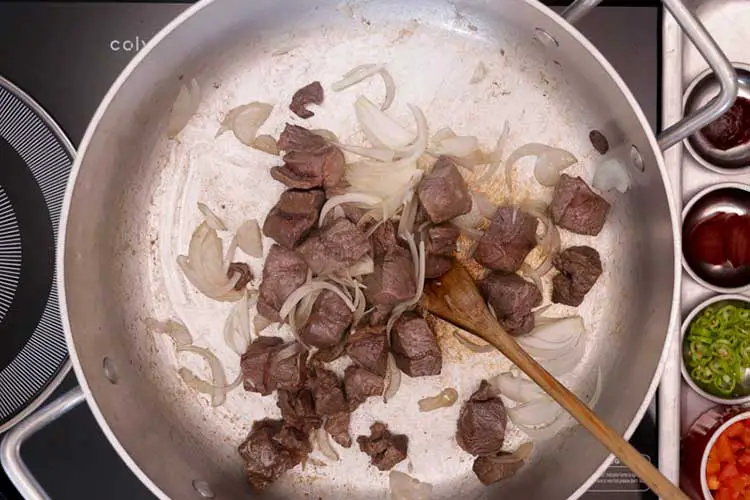
Add the garlic and the chopped peppers. This is the right moment to add these ingredients: putting them in too early would cause them to burn before the onions caramelize. Now add the tomato paste and the pepper paste. Again, adding these too early would introduce moisture into the pan, preventing the aromatics from getting a proper roasting.

Once the pastes are heated up, you can add the stock and deglaze the pan, scraping off all those burnt bits off from the bottom to release flavor.

Now add the tomatoes, cover the pan and simmer until the meat is tender, for about an hour.
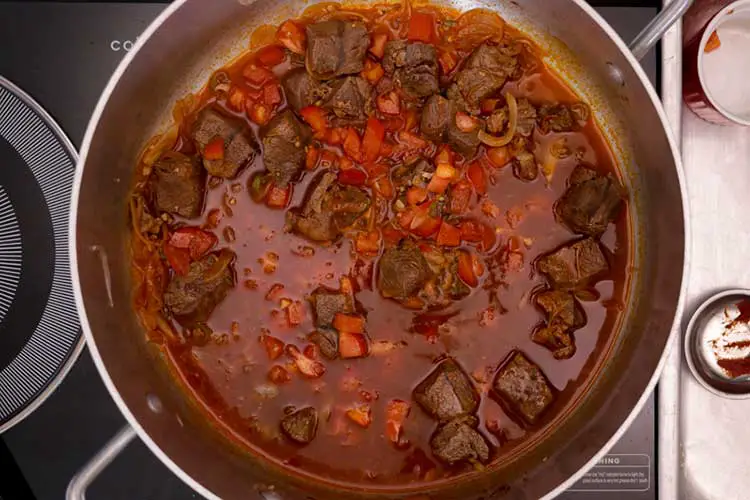
PREPARING THE EGGPLANT PUREE
While the lamb is stewing, get all of your eggplant puree ingredients together.
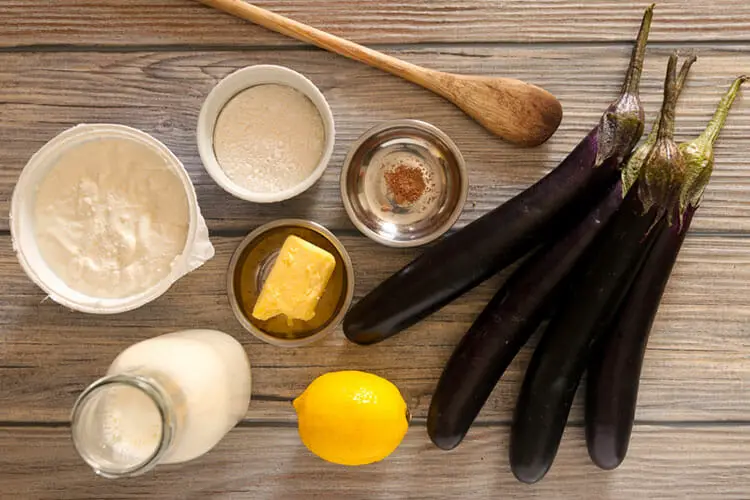
Set the eggplants over an open flame until each one gets an even char on the skin. Keep turning with tongs to prevent burning the flesh. This should only take a few minutes.

When they are done, set them aside and let them cool before peeling off all of the skin.
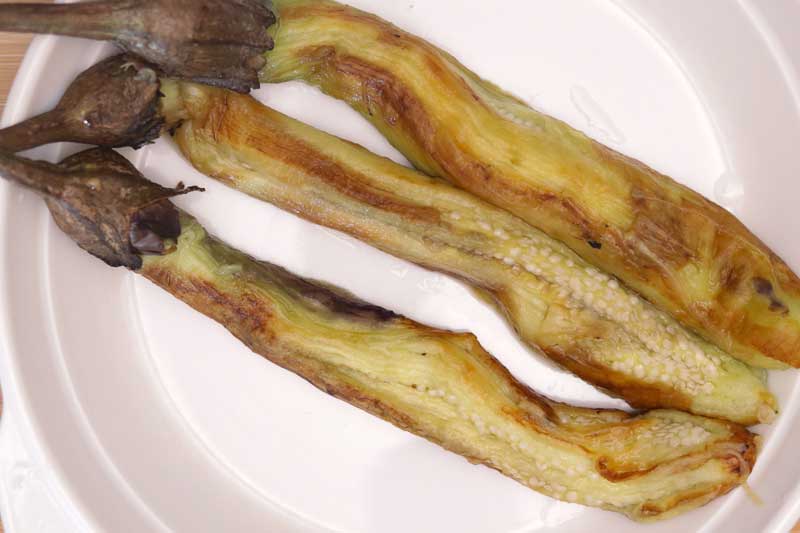
Mash up the eggplant flesh with a fork.

Now, take your butter and melt it in a pan. Dust the flour across it and mix it into the butter with a wooden spoon. Allow the flour to cook for a little while, but not so long that it starts to turn dark, as you want to try and keep the bechamel color as light as possible.
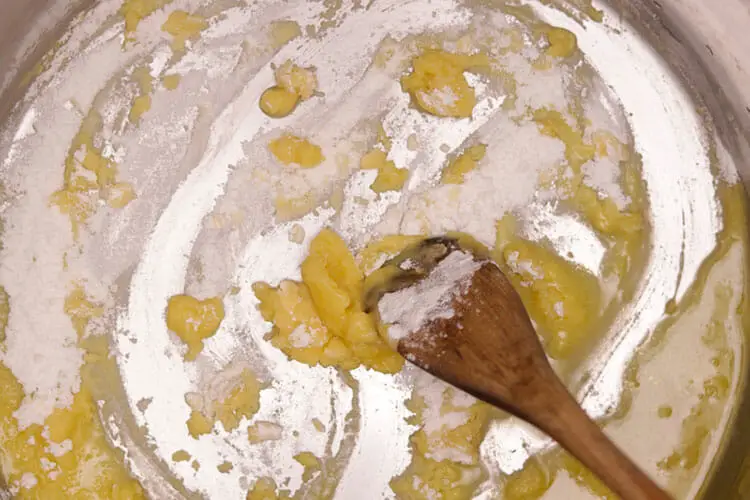
Whisk in the milk. Remember, the milk needs to be cold. Warm milk will leave you with a lumpy bechamel sauce.
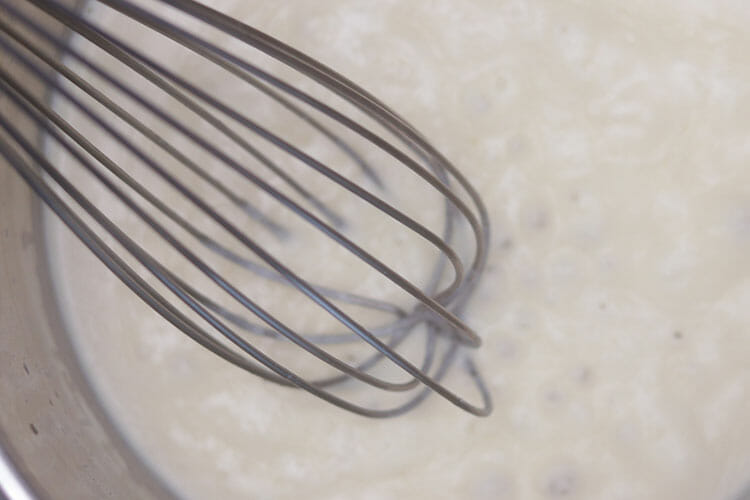
Add the mashed eggplant to the mixture.
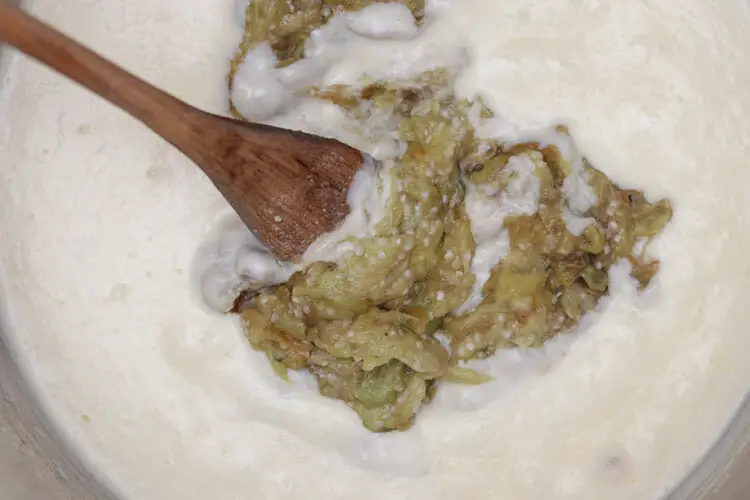
Add a pinch of nutmeg and even a squeeze of lemon.
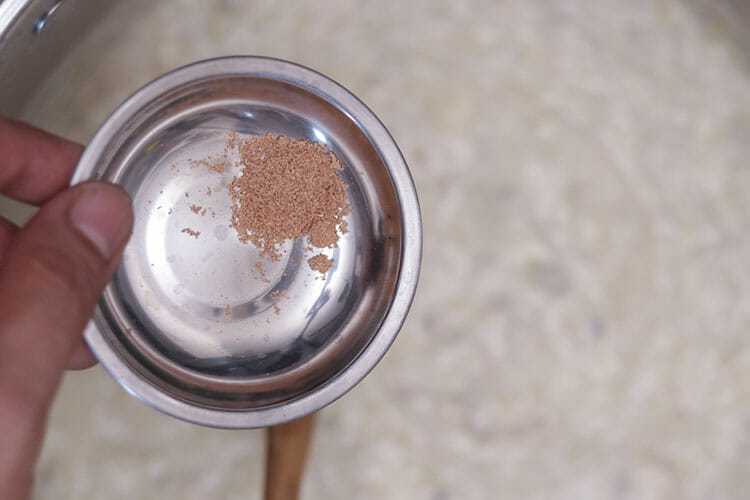
And now stir in the cheese, which should finish your puree off with a fresh, tangy twist. At this point, you can add some salt and pepper to taste.

To serve your Hunkar Begendi, spread the puree out on a plate and top with a few spoonfuls of the lamb stew. Serve with a glass of ayran, the Turkish kefir-like drinking yogurt and a an optional side of warmed flatbread.

Afiyet olsun! May your meal be worthy of a Sultan. And if it isn’t, feel free to jail the cook.
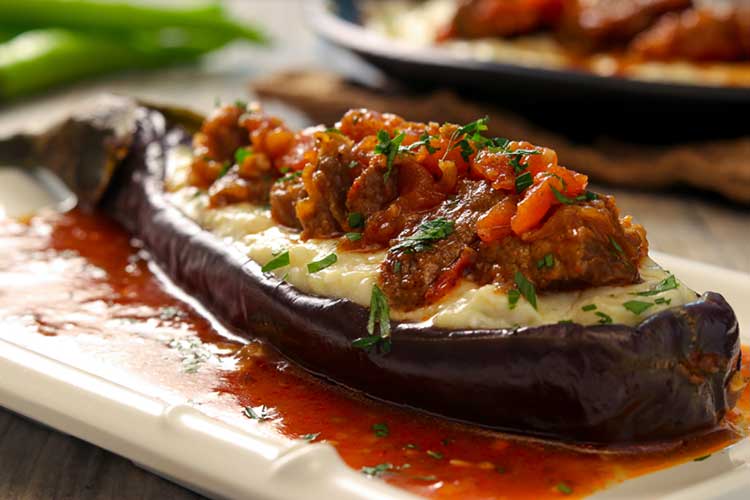
OUR TAKE ON THE RECIPE
We liked our Hunkar Begendi so much, we think we’re going to have to change its name to Arousing Appetites Begendi. The meat component was delicious – quite gamey and tasted like a spiced version of a more classic French ragout.
Likewise, the eggplant bechamel felt like a stroke of genius – the combination of the smoky flavor from the eggplant, the creaminess from the milk and butter, the subtle sharp flavor from the fresh cheese, the slight warmth from the nutmeg and freshness from the lemon came together in a taste crescendo. Even the choice of flat-leaf parsley for garnish was perfect. The herb added a very slight fragrance that was subtle but which we felt the dish couldn’t do without.
In terms of improvements to the source recipe we worked from, we thought that using whole shanks of lamb for more taste and texture might be better since the shank bones tend to give more flavor and collagen. Searing the meat correctly is also important. This means leaving it undisturbed in the pan until the surface is sealed; a method that always adds greater depth of flavor.
For fresh cheese, we decided on ricotta for its subtle creaminess and sharpness, but there are a variety of different cheeses you could opt for. Authentic soft white Turkish cheese would be ideal, but if that’s not available to you, then feta or paneer could also be good choices. We recommend staying away from stronger tasting cheeses like gruyere, manchego or provolone since there’s a danger their flavor would overpower the smokiness of the eggplants in the bechamel.

